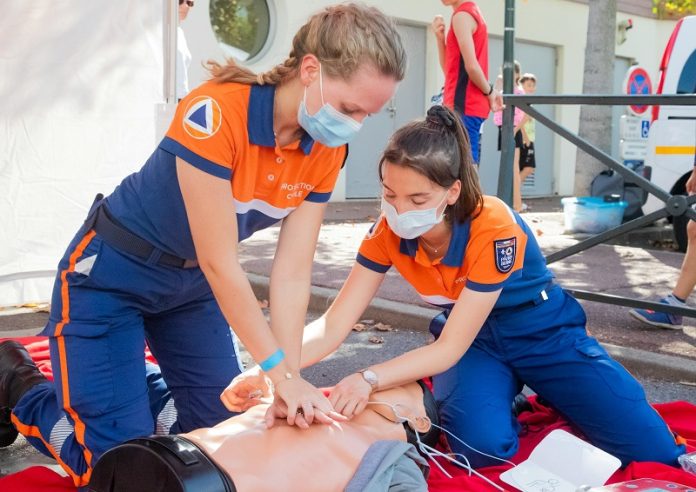
A nationwide study has found that emergency medical services (EMS) agencies that adopt several critical best practices have higher survival rates among heart attack patients.
Co-led by a researcher from UT Southwestern Medical Center, the study, published in JAMA Cardiology, highlights the importance of specific training methods and practices in improving outcomes for out-of-hospital cardiac arrest (OHCA) patients.
“EMS agencies are crucial in providing pre-hospital care for cardiac arrest patients, but survival rates vary greatly across the U.S.,” said Dr. Saket Girotra, Associate Professor of Internal Medicine at UT Southwestern.
“We aimed to identify the EMS practices that most strongly improve neurological survival and understand how top-performing agencies organize and deliver cardiac arrest care.”
Researchers reviewed data from the Cardiac Arrest Registry to Enhance Survival, examining 470 EMS agencies across the country that handled at least 10 OHCAs annually between January 2015 and December 2019.
They found that survival rates with good neurological outcomes varied widely, from 1.8% to 14.8%.
Agencies in the top 25% had a median survival rate double that of the lowest 25% (12% vs. 6%).
The study identified seven key practices linked to better neurological survival rates:
- Simulation Training for CPR Competency: Using simulation to assess how well staff perform CPR.
- Frequent CPR Reassessment: Regularly reassessing CPR skills in new staff.
- Full Multiperson Scenario Simulation: Conducting detailed scenario-based training regularly.
- Biannual Simulation Training: Performing simulation training at least every six months.
- Mechanical CPR Device Training: Training staff to use mechanical CPR devices at least once a year.
- CPR Feedback Devices: Using devices that provide real-time feedback on CPR skills during training and practice.
- Transport to Specialized Cardiac Arrest Centers: Taking patients to specialized centers capable of handling severe cases.
Dr. Girotra noted that adopting four or more of these practices was more common among high-performing EMS agencies.
“The findings show that frequent, detailed training, effective resuscitation management in the field, and careful transport decisions are key to improving survival rates,” he said.
“Identifying these elements is crucial for developing strategies to enhance cardiac arrest survival and reduce care disparities across the country.”
In the next phase of the study, researchers are visiting 12 EMS agencies, including eight top performers and several in majority Black or Hispanic communities. These visits will involve interviews with EMS leaders, medical directors, training supervisors, paramedics, and other stakeholders to gain deeper insights.
“We’re confident this phase will provide valuable information on best practices for improving cardiac arrest care,” Dr. Girotra said. “We’ll also explore how some EMS agencies overcome structural barriers to provide better pre-hospital care to vulnerable communities.”
This study underscores the importance of adopting effective training practices and specialized care strategies to improve survival rates for heart attack patients across the U.S. By implementing these best practices, EMS agencies can play a crucial role in saving lives and enhancing patient outcomes.
If you care about heart health, please read studies about top 10 foods for a healthy heart, and how to eat right for heart rhythm disorders.
For more health information, please see recent studies about how to eat your way to cleaner arteries, and salt and heart health: does less really mean more?



